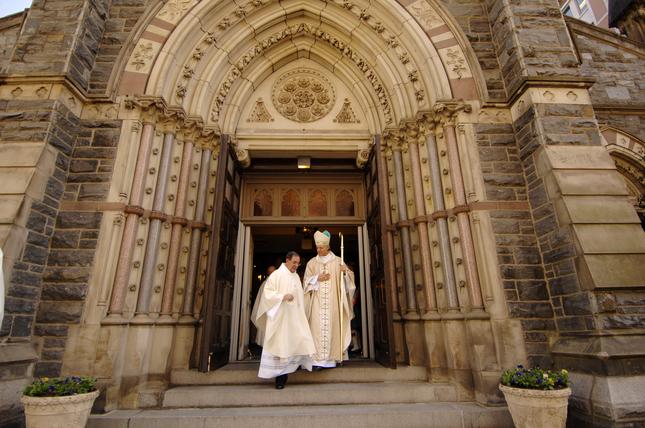Swampoodle: When Irish Eyes Were Smiling
By • March 26, 2015 0 2097

Early immigrants from Europe didn’t settle in Washington, D.C. They went to Northern cities where the jobs and pay were better. In 1850, less than 11 percent of the city was foreign-born, compared with 45 percent in New York.
This was because Washington was still a Southern city, and the availability of slave labor and cheap labor from freed blacks kept pay for laborers comparatively low. But around the time of the Great Potato Famine in Ireland – which resulted in waves of Irish emigration – laws were passed in Washington to keep free black people from settling here and getting jobs. One such law was the requirement of a certificate of freedom that cost $50, a hefty sum at the time, to prove that the free blacks were not runaway slaves. The result was a shortage of cheap labor that drew Irish immigrants fleeing the famine.
The other attraction for the Irish was the strong existing Catholic community, including the leaders of Georgetown University, who were happy to employ the Irish Catholic immigrants whenever they could.
Because the Irish were the subject of prejudice from the majority non-Catholic population, they were inclined to stick together. The area where these impoverished immigrants congregated was the least desirable real estate in town, namely the bleak area around what was then Tiber Creek, where Union Station now stands.
Swampy and full of perpetual puddles, the neighborhood soon earned the nickname “Swampoodle.” The first Irish immigrants to arrive lived in shacks and wood shanties without plumbing or running water. It was a rough-and-tumble neighborhood, and street crime, prostitution and drunkenness were rampant.
Critics of this Irish settlement said the only person who had any power over the population was the parish priest. It was true that the church – first, the original St. Patrick’s on F Street and then St. Aloysius, named after St. Aloysius Gonzaga – were the centers of the community. Gonzaga College High School was founded in 1821 to provide higher education (The Jesuit prep school remains in operation to this day with influential alumni). The parish church operated as the settlement’s civic center, and people banded together to provide food and help for the sick, the aged and the poorest members of the community. One local resident recalled, “If someone got into trouble, there was another potato in the pot and a place to sleep.”
This neighborhood solidarity was demonstrated when the government came to them during the Civil War, wanting to turn St. Aloysius Church into a hospital. Under the leadership of the parish priest, the citizens of Swampoodle mobilized, pitched in and built a 250-bed hospital in only eight days. This seemingly impossible task was accomplished because many of the men who lived there were carpenters and other laborers on construction projects. More importantly, they didn’t want to lose their church.
This old Irish neighborhood began to disappear in 1907, when Union Station was built. It was the biggest train station in the world at that time, and the gigantic site bisected the neighborhood. Tiber Creek was filled in, and more than 300 houses were demolished. The residential area became commercial and all but disappeared. The remnants of the heart of the old community are still there in two beautiful churches, St. Patrick’s at 619 10th St. NW and St. Aloysius at 19 Eye St. NW.
Ironically, much of the train station was built by the same laborers who once called Swampoodle home. To add to the irony, the formerly dissolute area is now the crossroads of several fashionable urban neighborhoods and a very hot real estate market.
Donna Evers is the owner and broker of Evers & Co. Real Estate, the largest woman-owned and -run real estate firm in the Washington metro area, the proprietor of Twin Oaks Tavern Winery in Bluemont, Va., and a devoted student of Washington-area history. Reach her at devers@eversco.com
- Archbishop of Washington — now also Cardinal — Donald Wurhl at St. Patrick’s Church in 2010. | Patrick Ryan






